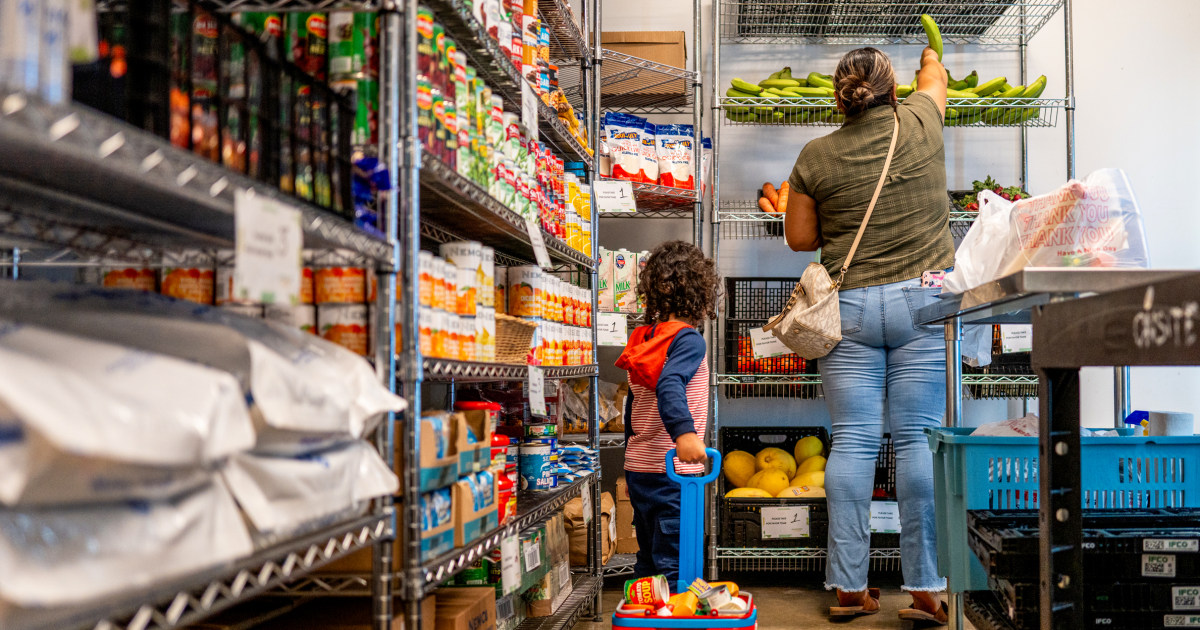Global Poverty Measurement: A Methodological Report for Monitoring Sustainable Development Goals
Introduction: Tracking Progress Towards SDG 1
The World Bank’s Poverty and Inequality Platform (PIP) provides critical data for monitoring progress towards the Sustainable Development Goals (SDGs), particularly SDG 1: No Poverty. According to recent estimates, 831 million people live in extreme poverty, subsisting on less than $3.00 per day. This report outlines the five-step methodology employed to produce transparent, high-quality, and internationally comparable poverty estimates, which are essential for tracking the global effort to eradicate poverty in all its forms.
A Five-Step Process for Global Poverty Estimation
-
Data Acquisition at the Source
The process begins with household surveys conducted by National Statistical Offices (NSOs). This foundational data collection is a direct measure of living conditions and is crucial for understanding poverty at a national level.
- Data Collection: NSOs gather information on income, spending, and consumption from representative household samples.
- Global Partnerships (SDG 17): In many low- and middle-income countries, the World Bank collaborates with NSOs, providing technical support in survey design and implementation. This partnership enhances data quality and capacity.
-
Constructing the Welfare Aggregate
A single, comprehensive measure of a household’s monetary well-being, known as the welfare aggregate, is created from the survey data. This metric is fundamental to assessing the economic dimension of poverty as targeted by SDG 1.
- Measurement: The aggregate typically measures total household consumption (common in low- and middle-income countries) or total income (common in high-income countries).
- Comprehensiveness: The goal is to capture all resources, including purchased goods and self-produced food, to provide a complete picture of a household’s economic status.
-
Standardization for Global Comparability
To enable meaningful cross-country comparisons essential for global SDG monitoring, welfare aggregates are converted into a common currency and standardized across time.
- Inflation Adjustment: Consumer Price Indices (CPIs) are used to account for changes in the cost of living within a country over time.
- Price Level Adjustment: Purchasing Power Parities (PPPs) are applied to adjust for differences in price levels between countries, ensuring that the international poverty line represents the same purchasing power globally.
-
Calculating Key SDG Indicators
Once data is harmonized, a global team calculates a range of poverty and inequality indicators that directly inform progress on the 2030 Agenda.
- SDG 1 (No Poverty): The primary indicator is the number of people living below the international poverty line ($3.00 per day), which reflects the poverty standard in the world’s poorest nations.
- SDG 10 (Reduced Inequalities): Various inequality measures are also computed to provide insights into the distribution of prosperity.
- Multidimensional Poverty: To offer a more holistic view of deprivation, the analysis extends beyond monetary measures to include non-income dimensions of well-being, aligning with other SDGs such as SDG 4 (Quality Education), SDG 6 (Clean Water), and SDG 7 (Clean Energy).
-
Data Modeling to Ensure Comprehensive Coverage
Recognizing that household surveys are not conducted annually in every country, statistical models are used to fill data gaps. This ensures a complete and current global dataset for annual SDG reporting.
- Estimation Techniques: Methods such as nowcasting, extrapolation, and interpolation use macroeconomic indicators like GDP per capita growth to estimate poverty levels in years without survey data.
- Addressing Data Scarcity: For countries with no survey data, models predict welfare aggregates based on known poverty-related factors, ensuring that all economies are included in the global and regional poverty assessments.
Conclusion: Data for Development
This rigorous, multi-step process transforms raw household survey data into harmonized, comparable global poverty estimates. By making this data publicly available, the World Bank supports evidence-based policymaking and accelerates global efforts to achieve the Sustainable Development Goals, particularly the eradication of extreme poverty by 2030.
SDGs Addressed in the Article
SDG 1: No Poverty
- The article is fundamentally about measuring global poverty, which is the central theme of SDG 1. It explicitly mentions the World Bank’s latest estimates of the number of people living in “extreme poverty” (831 million people) and the methodology used to arrive at this figure. The discussion of “multidimensional poverty,” which includes aspects like access to education, clean water, and electricity, directly aligns with the goal of ending poverty in all its forms.
SDG 10: Reduced Inequalities
- The article states that once the data is harmonized, a global team “calculates the poverty and inequality estimates from the household surveys.” This directly connects to SDG 10, as the measurement of inequality is the first and most critical step toward understanding and addressing it. The household survey data on income and consumption provides the foundation for analyzing disparities within and among countries.
SDG 17: Partnerships for the Goals
- The article highlights the collaborative nature of data collection and analysis. It mentions that National Statistical Offices (NSOs) “partner with World Bank economists in the design and execution of the surveys.” This collaboration is a clear example of partnership for strengthening statistical capacity in developing countries. Furthermore, the article acknowledges financial support from the UK Government, underscoring the importance of global partnerships in funding development initiatives.
Specific SDG Targets Identified
Targets under SDG 1 (No Poverty)
- Target 1.1: By 2030, eradicate extreme poverty for all people everywhere, currently measured as people living on less than $1.25 a day. The article directly addresses this target by detailing the process of measuring the number of people living below the “international poverty line,” which it states is currently set at “$3.00 per person per day” for these estimates.
- Target 1.2: By 2030, reduce at least by half the proportion of men, women and children of all ages living in poverty in all its dimensions according to national definitions. The article’s reference to computing measures of “multidimensional poverty,” which “goes beyond income and consumption to capture other important aspects of well-being,” directly relates to this target of addressing poverty in its various dimensions.
Targets under SDG 10 (Reduced Inequalities)
- Target 10.2: By 2030, empower and promote the social, economic and political inclusion of all, irrespective of age, sex, disability, race, ethnicity, origin, religion or economic or other status. The article’s mention of calculating “inequality estimates” from household survey data is a foundational activity for monitoring progress towards this target. This data allows for the disaggregation needed to understand the economic status of different population groups.
Targets under SDG 17 (Partnerships for the Goals)
- Target 17.18: By 2020, enhance capacity-building support to developing countries, including for least developed countries and small island developing States, to increase significantly the availability of high-quality, timely and reliable data disaggregated by income, gender, age, race, ethnicity, migratory status, disability, geographic location and other characteristics relevant in national contexts. The entire process described in the article, from NSOs partnering with the World Bank to the harmonization of data for international comparability, is an embodiment of this target. The goal is to produce “transparent, high-quality, and internationally comparable poverty estimates.”
- Target 17.19: By 2030, build on existing initiatives to develop measurements of progress on sustainable development that complement gross domestic product, and support statistical capacity-building in developing countries. The article’s focus on measuring poverty, inequality, and specifically “multidimensional poverty” is a direct example of developing metrics that provide a more comprehensive view of well-being than GDP alone.
Indicators for Measuring Progress
Indicators for SDG 1
- Indicator 1.1.1: Proportion of the population living below the international poverty line, by sex, age, employment status and geographical location (urban/rural). The article is centered on the methodology for calculating this exact indicator. It specifies the international poverty line used (“$3.00 per person per day”) and the source of data (household surveys), which is used to determine the proportion of the population living below this threshold.
- Indicator 1.2.2: Proportion of men, women and children of all ages living in poverty in all its dimensions according to national definitions. This is directly implied when the article mentions the computation of “multidimensional poverty” which assesses well-being based on factors like “access to quality education, clean water, and electricity.”
Indicators for SDG 10
- Indicator 10.2.1: Proportion of people living below 50 per cent of median income, by age, sex and persons with disabilities. While not explicitly named, the data collected through household surveys on income and consumption (the “welfare aggregate”) is the primary data required to calculate this indicator of relative poverty and inequality.
Indicators for SDG 17
- Indicator 17.18.3: Number of countries with a national statistical plan that is fully funded and under implementation, by source of funding. The article implies this indicator through its description of partnerships between the World Bank and National Statistical Offices (NSOs) for the “design and execution of the surveys.” This structured collaboration, often supported by external funding like that from the UK Government mentioned in the article, is a core component of implementing national statistical plans.
Summary Table of SDGs, Targets, and Indicators
| SDGs | Targets | Indicators |
|---|---|---|
| SDG 1: No Poverty |
1.1: Eradicate extreme poverty.
1.2: Reduce poverty in all its dimensions. |
1.1.1: Proportion of the population living below the international poverty line (e.g., $3.00/day).
1.2.2: Proportion of people living in poverty in all its dimensions (implied by the measurement of “multidimensional poverty”). |
| SDG 10: Reduced Inequalities | 10.2: Promote social, economic, and political inclusion of all. | 10.2.1: Proportion of people living below 50 per cent of median income (implied by the collection of household income/consumption data to calculate “inequality estimates”). |
| SDG 17: Partnerships for the Goals |
17.18: Enhance capacity-building to increase the availability of high-quality, timely, and reliable data.
17.19: Develop measurements of progress that complement GDP. |
17.18.3: Number of countries with a funded national statistical plan (implied by the partnership between NSOs and the World Bank for survey execution). |
Source: blogs.worldbank.org






